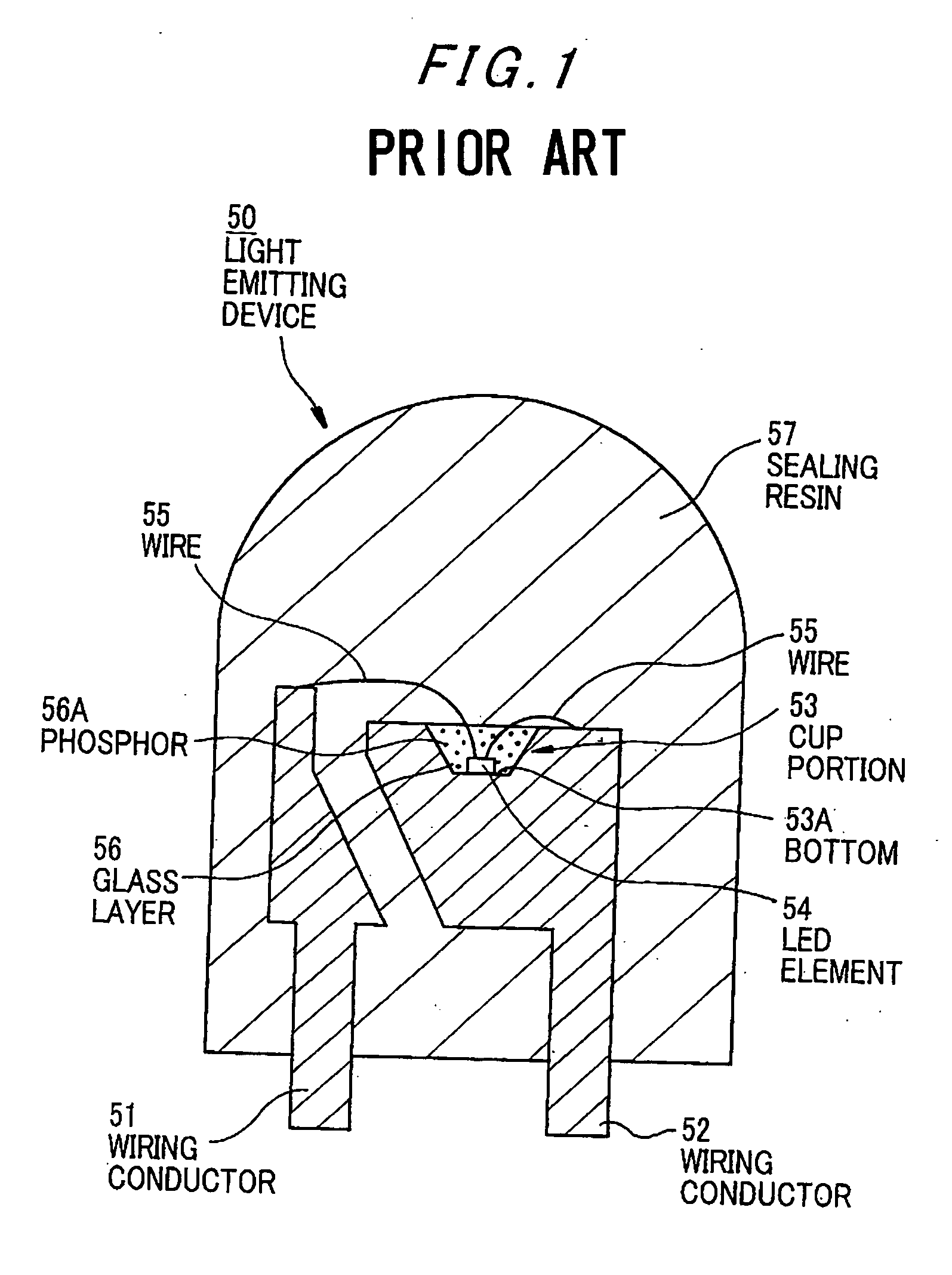Light emitting device
- Summary
- Abstract
- Description
- Claims
- Application Information
AI Technical Summary
Benefits of technology
Problems solved by technology
Method used
Image
Examples
first embodiment
[0103] In the first embodiment, since the corners of LED element 3 are obliquely cut off to offer the oblique portions 32, the turbulence of glass can be reduced when integrally molding the low-melting glass being softened at about 108 to 1010 poises. Thereby, the uniformity of glass can be maintained and the inclusion of air can be prevented. Therefore, the light emitting device 1 with reduced residual bubble can be obtained. Further, because of cutting off the acute corner that the internal stress is likely to concentrate, the occurrence of crack by a heat shock in the glass sealing portion 2 can be prevented. The cutting is easily conducted by using a suitable cutter in the wafer dicing.
[0104] Although in the first embodiment the LED element 3 is provided with the oblique portions 32 at the four corners on the emission observing surface side, edges defined between the emission observing surface and the side face of LED element 3 may be also cut off. Thereby, the residual bubble a...
second embodiment
[0109] In the second embodiment, because of having the curved portions at the corners, the turbulence of glass can be more effectively reduced when integrally molding the softened low-melting glass by hot pressing. Thereby, the residual bubble around the LED element 3 can be further reduced (enhancing the uniformity of glass), and the occurrence of crack can be further prevented.
[0110] In addition to the curved portions 33 at the four corners on the emission observing surface side, edges defined between the emission observing surface and the side face of LED element 3 may be also cut off. Thereby, the residual bubble around the LED element 3 can be further reduced (enhancing the uniformity of glass), and the occurrence of crack can be further prevented.
[0111]FIG. 6 is a cross sectional view showing the central portion of a light emitting device in the third preferred embodiment of the invention.
[0112] The light emitting device 1 is constructed as a wavelength conversion device com...
fifth embodiment
[0128] In the fifth embodiment, the substrate 30 of GaN has a big refractive index of n=2.4 and therefore the light extraction efficiency can be enhanced. Light not to be radiated when using the substrate 30 of Al2O3 can be externally radiated from the GaN light emitting layer 31. Further, if the LED element 3 is formed as a rectangular solid, an incident mode exceeding the critical angle to the interface of LED element 3 will be generated. However, the oblique portion 32 formed on the substrate 30 allows the radiation of light from the GaN light emitting layer 31 even in such an incident mode. Thus, loss in light radiation can be reduced.
[0129] The material of substrate 30 is not limited to GaN and may be SiC etc. that has a refractive index similar to that of GaN substrate 30.
[0130]FIG. 9 illustrates a light emitting area and a light radiation of an LED element in the sixth preferred embodiment of the invention.
[0131] As shown, the LED element 3 has a light emitting area A small...
PUM
 Login to View More
Login to View More Abstract
Description
Claims
Application Information
 Login to View More
Login to View More - R&D
- Intellectual Property
- Life Sciences
- Materials
- Tech Scout
- Unparalleled Data Quality
- Higher Quality Content
- 60% Fewer Hallucinations
Browse by: Latest US Patents, China's latest patents, Technical Efficacy Thesaurus, Application Domain, Technology Topic, Popular Technical Reports.
© 2025 PatSnap. All rights reserved.Legal|Privacy policy|Modern Slavery Act Transparency Statement|Sitemap|About US| Contact US: help@patsnap.com



